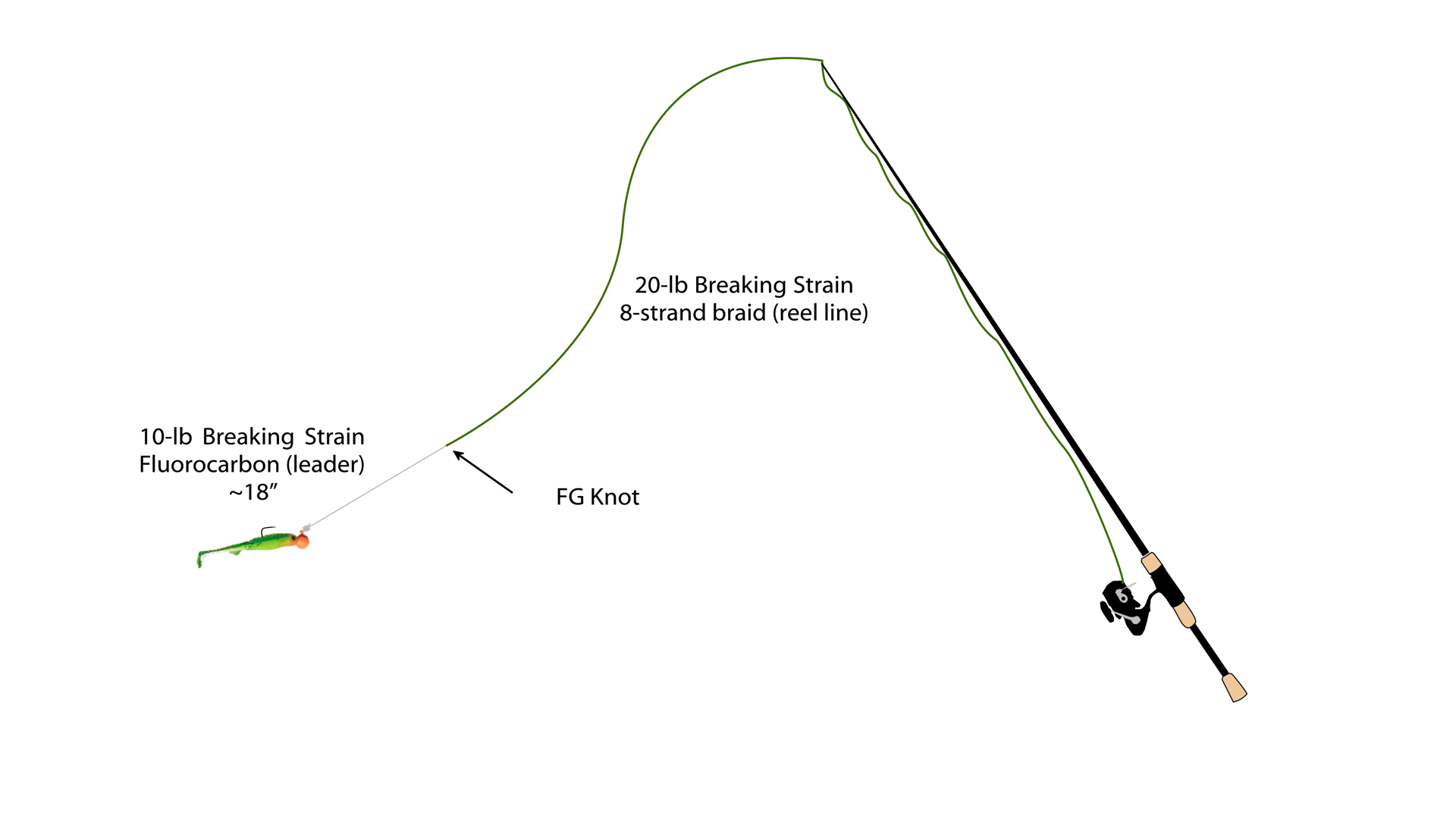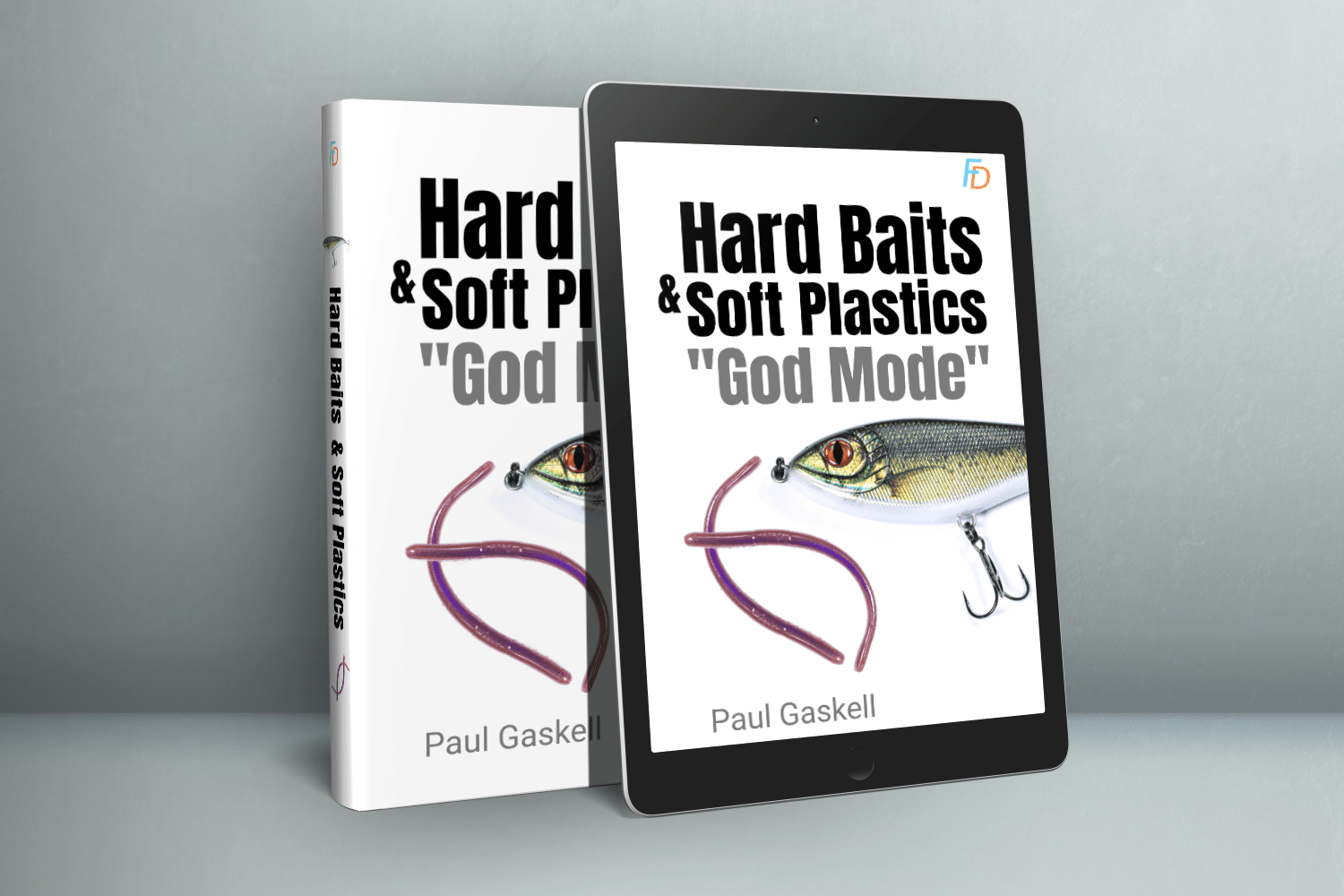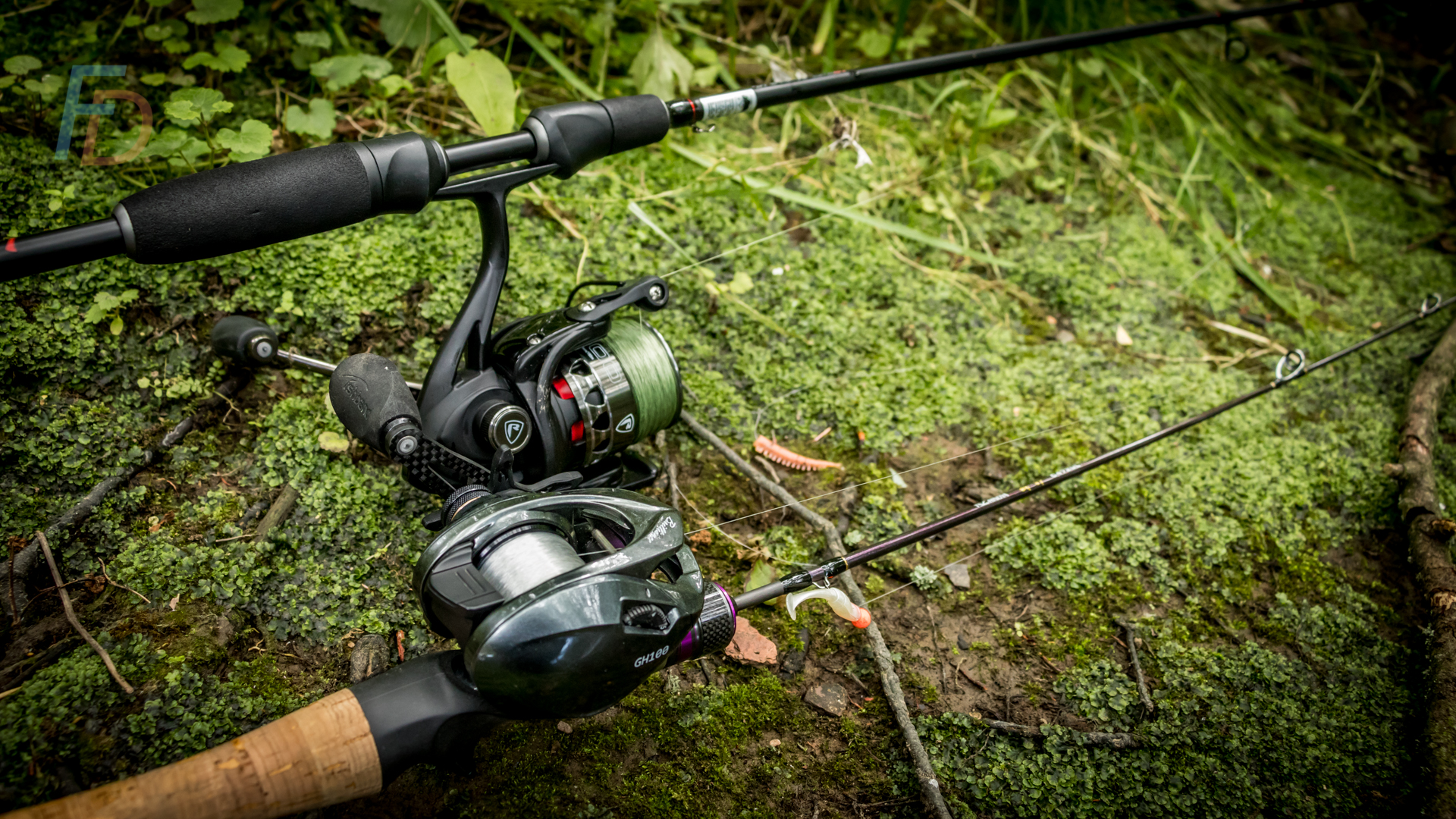
In lure fishing, one of the simplest and best quickfire “search” rigs is a perch jig setup with light and ultralight lures. I have a real soft spot for perch and their personality, so I love to fish for them when I have the chance.
Below are the two main variations on a jig fishing rig that I like to use.
Rig #1: BFS Perch Jig Setup
This is my favourite for ultralight setups and makes fishing for smaller perch incredible fun. I’ve also landed bigger perch on this rig too with no problems at all. I love the simplicity of being able to tie straight through from reel line to lure. Fishing rigs don’t get much simpler than this!

If you aren’t too familiar with “BFS” or Bait Finesse System lure fishing just click the orange highlighted link in this sentence to find out more about this addictive branch of angling.
The summary of this BFS perch jig setup is:
Also, ceramic or ceramic/steel hybrid bearings are a good idea (if your reel doesn’t come with those out of the box). I’ll do a separate article on changing bearings for you soon.

Example ultralight BFS Perch Jig Setup: GH100 reel, 4lb Berkley Trilene fluorocarbon & Tsurinoya ARES C472 rod
Light Spinning Perch Jig Setup
I’ll start out by saying that the line and terminal rig setup shown here can also easily be used on a BFS setup. The breaking strain of the braid and leader sections can also be modified to suit your purposes.
The ability of fixed spool reels to easily cast lighter lures long distances – while still being able to handle heavier lures – makes this a very flexible perch jig setup.
Don't be fooled into thinking that a BFS setup will be able to cast a 0.5 to 1.5-g lure anything like the distance a well-filled fixed-spool reel rig (and suitable rod) can. However, for lures above 1-g, there can be many advantages in accuracy and how gently you can put the lure down with BFS - so there are always trade-offs to consider.
Spinning gear may well be your best option to try first – before getting into building up the quite difficult skills of using baitcasting reels with light lures.

See text instructions and video guidance below on how to tie the FG knot
Because a regular fixed spool spinning reel is used, this option can be more accessible to anglers who don’t want to buy a super specialised baitcasting reel with a shallow “bfs” spool...
"Unfair Advantage" Lure Fishing Tactics...
Before I get into breaking down the spinning rig details and tactical choices to improve your jig fishing results - you might already know that the most consistently successful lure anglers will have more tricks, rigs and tactics to draw on than the Average Joe. I've pulled together some of my favourite "unfair advantage" knowledge and turned it into a free e-book as a subscriber bonus. It needed a catchy title - so the idea of downloading this and then being able to switch into "Fishing-god Mode" at any time made me smile...
Just Click Here or on the Book Image/Button below to register for your Free Copy - plus 5 more fishing secrets via email:

A rundown of the Light Spinning Perch Jig Setup is:
Joining the braid to the fluorocarbon leader using an FG knot is important so that it will easily pass through the line guides when casting (I've updated this recommendation from an Allbright knot, since the FG is pretty much impossible to snag in the line guides while casting)
Being able to wind the lure right up to the tip ring on your rod opens up far more casting opportunities than needing to keep it dangling on a longer leash before starting your cast (in other words, you can use a shorter "drop").
Here is how to hold the line and make the turns easily and quickly:
What you Need a Perch Jig Setup to DO
With the rise in popularity in lure fishing in my country and around the world, there is so much more high quality tackle available. Along with that come so many more options – and that can be confusing at first.

Spinning/Dropshot rod & reel (top) with BFS rod and reel (bottom)
As with all fishing, it is possible to cut through some of the confusion by making sure you understand what result you are trying to achieve. That way, it makes it much easier to work backwards to the best gear and best rigs to support the aim of your technique.
When it comes to a perch jig setup, a good rule of thumb is to present a bait that swims the whole time and follows a path that looks like a long series of flattened, joined-up “mmmmmmmmmmmmmmm”s! With grub-tail or paddle-tail lures, these "swim" while sinking - so they create their own attractive action - even without the angler doing much at all.

Extended "mmmm" shaped path - a classic sink-and-draw action with the tail swimming throughout
You can use this retrieve path to hop a lure along the bottom, swim just off the bottom or even higher up in the water. Because the soft jig tail swims on the descent as well as when you reel, you often don’t need to add any extra action with the rod.
The vertical path of the jig can easily be made to follow the classic "sink and draw" path that wobbled dead-bait pike anglers have been using for generations...
How to Use your Chosen Setup
My experiences match those of Jörgen Larsson from Westin in the video below – when he says that around 8 out of 10 bites come when the lure is dropping.
For me, those 80% of bites are about half and half between the point at which the lure begins to drop after a turn of the reel and then the point where it is just about to hit bottom. The remaining 20% are split between having fish slash at the lure just as you're about to lift off and the first upward movement after a pause.
Quickstart Guide to Choosing a Perch Jig Setup
The near zero stretch of braid (and the sensitivity to bites that creates) becomes even more of an advantage when casting longer distances and fishing deeper water.
In contrast, the great accuracy of BFS – and the way it makes it easier to drop the lure in softly at the end of a cast – makes it a good option for roving around and fishing shallow river and canal venues.
Bear in mind; the lighter the jig (and the bigger the paddle-tail) the more slowly it will drop through the water. So both water depth and (for rivers) current speed will control how heavy your jig needs to be in order to reach bottom without snagging constantly.
So, a quick and dirty rule of thumb guide would be:
Enjoy experimenting and please let me know in the comments about your experiences and whether you found this useful.
Paul
P.S. Please feel free to click the social share buttons if you know anyone who would benefit from this content - and tell me what you think in the comments below

could you alternatively use a swivel instead of the knot?
Hi Max, yes you could – though that prevents the option of winding the lure up close to the rod tip for extra casting accuracy. It all depends on the venue and style you’re going to fish it.
Paul
Hi Paul, I’m sure you will be familiar with this style of casting using a fixed spool reel: looks like it closes the accuracy gap between fixed spool and baitcaster setups
https://youtu.be/T8G2Hy6LiJk
Yeah, I love the technique on display there Andrew – thanks for flagging up.
Paul
Excellent video. Thanks for sharing.
Cheers Andrew – much appreciated and I’m glad you found it useful.
Paul
Thank you for this very informative article.
Cheers Colin – you are very welcome and I’m really glad you found it useful. I hope it puts a few bonus fish in your net over the next couple of years!
Paul